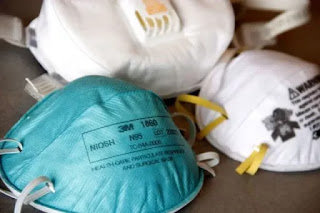Infostealer.Orcu
Risk Level 1: Very Low
Discovered: June 20, 2006
Updated: June 21, 2006 11:54:54 AM ZE9
Type: Trojan Horse
Systems Affected: Windows 2000, Windows 95, Windows 98, Windows Me, Windows NT, Windows Server 2003, Windows XP
SUMMARY
Infostealer.Orcu is a Trojan horse that attempts to steal confidential information, such as bank and Paypal accounts. It may arrive as a message spammed across the Orkut network.
Protection
- Virus Definitions (LiveUpdate™ Daily) June 21, 2006
- Virus Definitions (LiveUpdate™ Weekly) June 21, 2006
- Virus Definitions (Intelligent Updater) June 21, 2006
- Virus Definitions (LiveUpdate™ Plus) June 21, 2006
Threat Assesment
Wild
- Wild Level: Low
- Number of Infections: 0 - 49
- Number of Sites: 0 - 2
- Geographical Distribution: Low
- Threat Containment: Easy
- Removal: Moderate
Damage
- Damage Level: Low
- Payload: Downloads additional malware.
- Releases Confidential Info: Gathers and sends out sensitive financial information.
Distribution
- Distribution Level: Low
TECHNICAL DETAILS
Orkut's users may receive a malicious link from other infected contacts. The Trojan posts a message in the user's scrapbook area of the Orkut system. The message text is chosen by the attacker and can be a random sentence written in Brazilian Portuguese, such as the following:
Message example 1:
Opa, tudo bom? Eu criei um video com uma selecao de minhas fotos novas, clica ai pra ver - [MALICIOUS_LINK] - Esta bem legais!!!
Message example 2:
Oi... tudo bom? Como o orkut limita a quantidade de fotos que podem ser publicadas na minha conta, eu criei um slide com algumas fotos minhas, pra ver e so clicar clicar no link!!! [MALICIOUS_LINK] - Sei que vai gostar
If users click on the link, a malicious file is downloaded, which is a copy of Infostealer.Orcu.
When Inforstealer.Orcu is executed, it performs the following actions:
- Copies itself as the following location:
%System%\wzip32.exe
Note: %System% is a variable that refers to the System folder. By default this is C:\Windows\System (Windows 95/98/Me), C:\Winnt\System32 (Windows NT/2000), or C:\Windows\System32 (Windows XP). - Adds the value:
"WinZip" = "%System%\wzip32.exe"
to the registry subkey:
HKEY_LOCAL_MACHINE\SOFTWARE\Microsoft\Windows\CurrentVersion\Run
so that it runs every time Windows starts. - Modifies the values:
"CheckExeSignatures" = "no"
"RunInvalidSignatures" = "1"
in the registry subkey:
HKEY_CURRENT_USER\Software\Microsoft\Internet Explorer\Download
so that Internet Explorer downloads files covertly. - Contacts the following URL to download and execute another threat:
[http://]www2.no.comunidades.net/sites/jo/joaosembraco/imagens/log[REMOVED] - Copies the above threat as the following files:
- %Temp%\tmp.dat
- %System%\winlogon_.jpg
- %System%\logo1.jpg
%System%\login.dll
Note: %Temp% is a variable that refers to the Windows temporary folder. By default, this is C:\Windows\TEMP (Windows 95/98/Me/XP) or C:\WINNT\Temp (Windows NT/2000).
- It may create the following folder:
%Windir%\htmCache
Note: %Windir% is a variable that refers to the Windows installation folder. By default, this is C:\Windows or C:\Winnt. - Registers the above files as a Browser Helper Object for Microsoft Internet Explorer and creates the following registry subkeys:
HKEY_LOCAL_MACHINE\SOFTWARE\Microsoft\Windows\CurrentVersion\Explorer\Browser Helper Objects\{FCADDC14-BD46-408A-9842-CDBE1C6D37EB}
HKEY_CLASSES_ROOT\CLSID\{FCADDC14-BD46-408A-9842-CDBE1C6D37EB}
- When Internet Explorer is executed, the BHO component shows the following message box:
- Monitors Internet Explorer windows and attempts to steal login information and passwords from the following Web sites:
- www2.bancobrasil.com.br
- www.bradesco.com.br
- www.caixa.gov.br
- internetcaixa.caixa.gov.br
- bankline.itau.com.br
- ibpf.unibanco.com.br
- empresarial.unibanco.com.br
- www2.realsecureweb.com.br
- www.equifax.com.br
- www.serarsa.com.br
- www.nossacaixa.com.br
- pf01.suadmeris.com.br
- www.safra.com.br
- www.paypal.com
- www.orkut.com
- www.itaucard.com
- Gathers the following information about the compromised computer:
- MAC address
- Serial number of hard drive
- CPU type
- OS version and service pack
- Stores the gathered information in the following file:
C:\cpu.log - May end the following security-related processes:
- NPFMntor
- ASHSERV.EXE
- ASWUPDSV.EXE
- ASHWEBSV.EXE
- ASHMAISV.EXE
- ASHDISP.EXE
- AVGCC.EXE
- AVGUPSVC.EXE
- AVGAMSVR.EXE
- Sends back the gathered accounts and information using the following legitimate domain:
submit.mailmyform.com
Recommendations
Symantec Security Response encourages all users and administrators to adhere to the following basic security "best practices":
- Turn off and remove unneeded services. By default, many operating systems install auxiliary services that are not critical, such as an FTP server, telnet, and a Web server. These services are avenues of attack. If they are removed, blended threats have less avenues of attack and you have fewer services to maintain through patch updates.
- If a blended threat exploits one or more network services, disable, or block access to, those services until a patch is applied.
- Always keep your patch levels up-to-date, especially on computers that host public services and are accessible through the firewall, such as HTTP, FTP, mail, and DNS services (for example, all Windows-based computers should have the current Service Pack installed.). Additionally, please apply any security updates that are mentioned in this writeup, in trusted Security Bulletins, or on vendor Web sites.
- Enforce a password policy. Complex passwords make it difficult to crack password files on compromised computers. This helps to prevent or limit damage when a computer is compromised.
- Configure your email server to block or remove email that contains file attachments that are commonly used to spread viruses, such as .vbs, .bat, .exe, .pif and .scr files.
- Isolate infected computers quickly to prevent further compromising your organization. Perform a forensic analysis and restore the computers using trusted media.
- Train employees not to open attachments unless they are expecting them. Also, do not execute software that is downloaded from the Internet unless it has been scanned for viruses. Simply visiting a compromised Web site can cause infection if certain browser vulnerabilities are not patched.


No comments:
Post a Comment